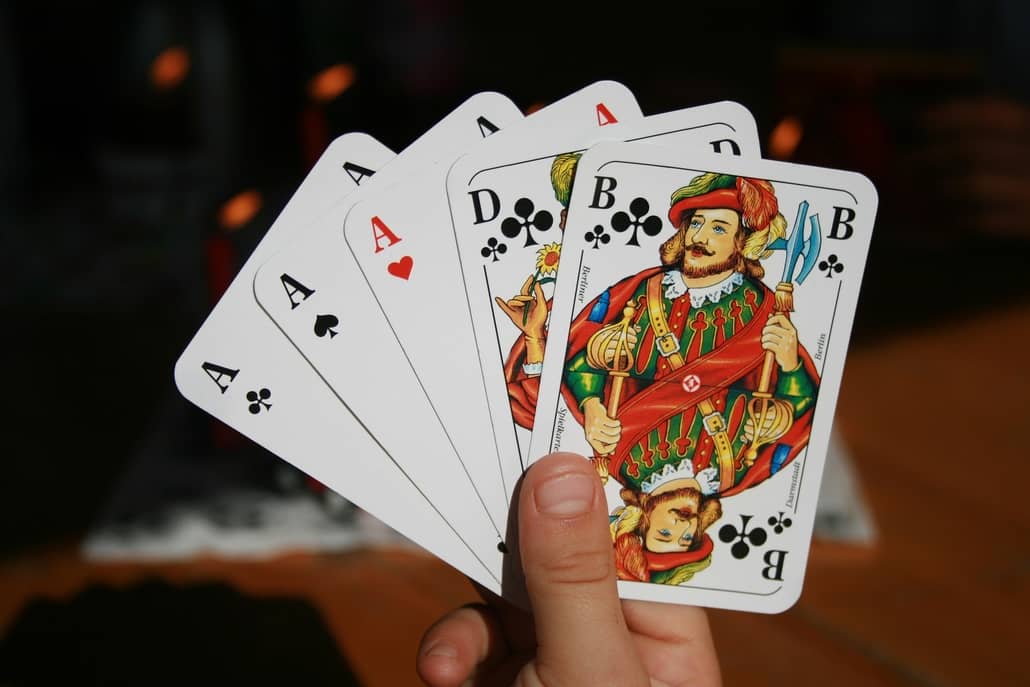5 Card Plo Rules
Pot Limit Omaha 5 is a derivative of Texas Hold’em where each player is dealt five private cards, and must make the best hand possible using two (and only two) of their private cards and three (and only three) of the five community cards which are available to every player. A maximum of nine players can play 5 card PLO where they’re dealt five-hole cards face-down. 3) Pre-Flop Here, the players have to act, by either calling, raising, or folding their cards. The pre-flop is the first round of dealing in which the action always starts clockwise from the big blind position.
- 5 Card Omaha is an Omaha poker variant. The same rules apply as in regular Omaha however, in 5 Card Omaha games, all players are dealt five cards before the flop but there still is the requirement to use two of your hole cards as well as three of the community cards to make the best five-card poker hand.
- In this course we’ll explore the strategy adjustments involved in 5-card Pot Limit Omaha, both preflop and postflop. Takeaways on where to start and also where to intensify the leg work in order to become better. Featured in the series: - Cash game - Theory - Tournaments.

How to play 6 Card PLO, the newest online poker game at PokerStars.
It’s not often a new poker variant comes along. Well, that’s not exactly true. New poker games are being conceived all the time, but it is rare that one makes it any further than the cutting room floor. The executives over at PokerStars thought their latest edition was good enough to bring to the virtually-felted table.
I’m talking about the newly introduced game of Six Card Pot Limit Omaha. It is exactly what the name implies – a six-card version of the popular PLO poker format. Instead of four hole cards, players get six. Simple enough, right? Yes, but as always, there’s a bit more to be considered.

How to Play 6 Card PLO
Aside from the ‘6 hole cards’ factor, the rules of the game are precisely the same as traditional Pot Limit Omaha Poker. Each player is dealt six hole cards to start. As the game progresses, five community cards are dealt to the center of the table – three on the Flop, one on the Turn, and one more on the River.
At the showdown, each player (that hasn’t folded) must combine exactly 2 of their 6 hole cards, with exactly 3 of the 5 community cards, to create the best possible 5-card poker hand. The player with the highest hand wins.
How 6 Cards Changes Everything!
This might sound like the exact same PLO game, but when it comes to strategizing against your opponents, having six cards in the hole changes everything. The range of hands you can put your opponent(s) on is far greater. Simply put, you’ll need a very good hand to progress in this game.
With 4 hole cards, there are exactly 6 possible 2-card combinations to work with. Raising the number to six hole cards increases the number of 2-card combinations to 15. The vast increase in hand combinations is a perfect analogy for the mass increase in variance.
It’s Not New – Just New to PokerStars
If you’re an avid poker player – particularly of online poker games – odds are you knew about this game long before PokerStars brought it onto their platform last week. Games of 5-card and 6-card PLO have circulated on private tables for years, and have been the topic of online forum discussions for at least a decade. Full Tilt Poker was giving members the option to play 6-card PLO back in 2013.
Yes, the game has been around for quite some time now, but this is the first time it’s ever been introduced in limelight fashion, thanks to PokerStars’ expensive marketing campaign. Some say it adds more excitement to the game. However, most will agree that it’s just a ploy to generate more rake for PokerStars.
5 Card Plo Rules Online
It’s All About the Money
The higher the variance a game has, the greater role luck will play in the outcome. Giving each player 6 hole cards is, essentially, an attempt at convincing players they could have a fantastic hand. Of course, they’ll need to see the Flop to know for sure. Every online poker player knows, the pot does not get raked unless it lasts long enough to see a Flop. Thus, if it goes mainstream, this game is destined to see a lot of Flops, thereby generating a lot of revenue for PokerStars.
Will Six Card Pot Limit Omaha appeal to professional poker players, who generally seek out games where skill dominates? Will it generate enough excitement to draw new players to the virtual felt? Only time can answer these questions. Until then, I’m going to lay my money on, “No”.
#1 Canadian-Friendly Casino for 2021
Royal Vegas is our editorial pick for safe Canadian gaming. Currently offering a good range of Canadian deposit options, everything from prepaid gift cards, to eCheck, instadebit and visa/mastercard. That, and a world-class gaming experience, with countless table games, strong variety, and even live dealers. The brand has been in the business for a decade long.

Visit http://RoyalVegas.com

The Basic Rules of Pot Limit Omaha (PLO)

Omaha is a poker variant in which each player is dealt four “hole” cards (cards that the other players can’t see) and then share a five card board. It is similar to Hold’em in its play, with flop, turn, and river cards dealt in succession on the board, interspersed with betting rounds. The most common betting structure for Omaha is Pot Limit, in which players can only bet the size of the pot, including their call.
The play begins with each player being dealt four cards. Unlike Hold’em, players must play exactly two cards from their hand and exactly three from the board. Hand rankings are the same in Omaha and Hold’em, with a high card being the worst and a royal flush the best possible hand.
What Is 5 Card Plo
In PLO, the play starts with a small and big blind, which rotates each turn. The first player after the big blind (Under the Gun – UTG) may fold, call the big blind, or raise up to the “pot limit.” If the blinds are $1 and $2, the UTG player can bet up to $7. Things then get a little tricky. The second player can now fold, call the $7 or bet up to $24. This betting structure takes a while to get used to. See our How to Calculate Pot Limit article for more examples. When in doubt, if you would like to bet the maximum, you can always announce that you bet “pot” and the dealer will figure out the amount for you.
Note that starting hand values are quite different than in Hold’em, so you’ll want to familiarize yourself with these differences before playing Omaha. The “Advice” button in our PLO simulator can help you with this.
Hand equities run much closer together in Omaha, and thus more players will generally stay to see the flop than in Hold’em. With the ability to select the best two of a four card hand, winning hands in Omaha also tend to be quite strong. Single pairs and two pairs are rarely likely to take down the pot, and players should be drawing to nut straights and flushes if they decide to draw.
As you might imagine, Omaha pots can grow quite big, and with pre-flop hand equity advantages rarely larger than 60% variance swings in PLO can be big as well. The PLO player will need a larger bankroll than the typical No-Limit Hold’em player for that reason.